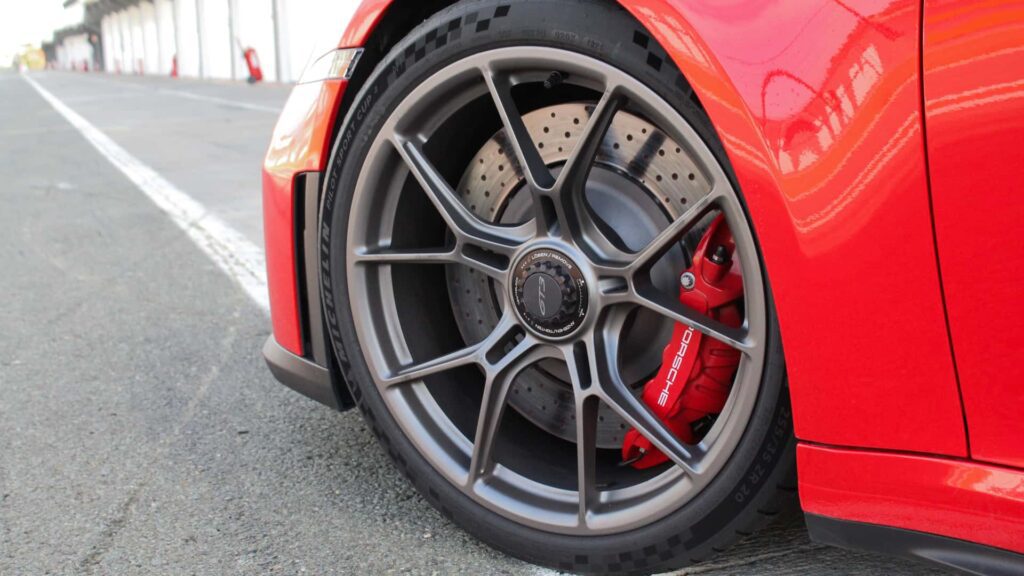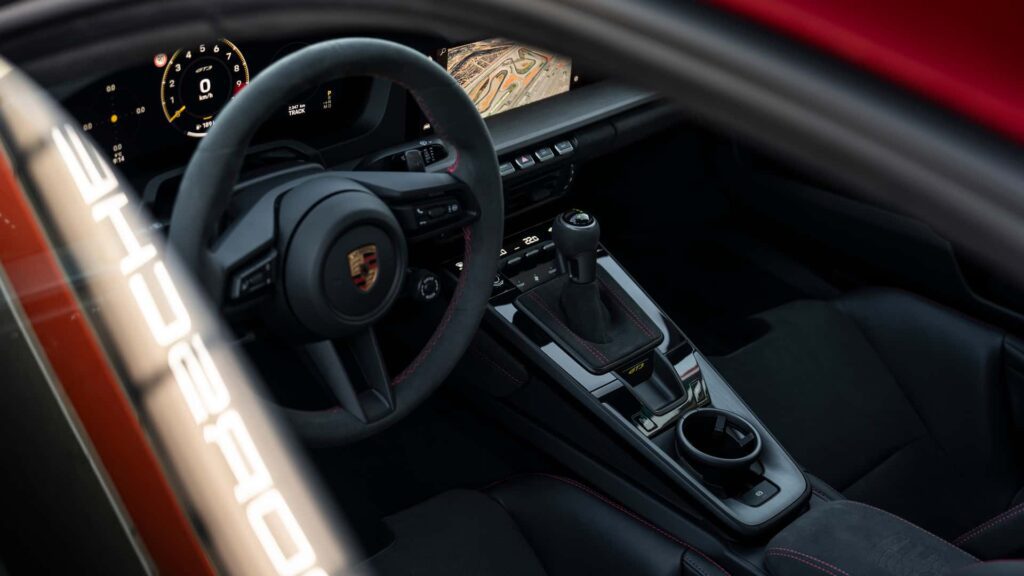
Porsche has fine-tuned the 911 GT3 for 2025 with a series of incremental yet impactful updates. Rest assured, the essence of this high-performance machine remains intact.
For automotive purists, the 911 GT3 is nothing short of a masterpiece. This track-focused Porsche exemplifies the perfect blend of lightweight construction, high-revving power, and a driver-centric experience. As one of the last true analog supercars in an era of electrification and turbocharging, the GT3 holds a special place in enthusiasts’ hearts.
The previous-generation GT3, introduced in 2021, was widely regarded as near-perfect. It featured a groundbreaking double-wishbone front suspension and advanced aerodynamics without compromising everyday usability. Improving upon such a refined formula is no easy feat, but Porsche has managed to refine the package with meticulous engineering enhancements.
Quick specifications
| Engine | 4.0-Liter Flat-Six |
| Transmission | Six-Speed Manual / Seven-Speed Automatic |
| Output | 502 Horsepower / 331 Pound-Feet |
| 0-60 MPH | 3.2 Seconds |
| Base Price / As-Tested Price | $224,495 / $291,045 |
Refining the Powertrain
At the core of the GT3 is its legendary 4.0-liter naturally aspirated flat-six engine—a defining feature that distinguishes it from the competition. Recognizing its importance, Porsche surveyed 2,000 GT3 owners, who overwhelmingly favored keeping the high-revving flat-six over a more efficient turbocharged alternative.
Meeting increasingly strict emissions regulations posed a challenge, requiring the integration of four catalytic converters and, in Europe, two particulate filters. Despite these restrictions, the engine retains its 502-horsepower output. Internal modifications, including redesigned camshafts for optimized valve timing and reshaped individual throttle bodies for improved airflow, contribute to maintaining performance. Enhancements such as an upgraded oil cooler and refined airbox ensure optimal temperature management.


Gearing Up for More Excitement
One of the most significant changes is the adoption of an 8% shorter final drive ratio, derived from the 911 S/T. While the new setup results in a slight torque reduction to 331 lb-ft, the shorter gearing compensates by delivering a more responsive and engaging driving experience. The revised transmission ratios make acceleration even more exhilarating, particularly in the manual variant, where reaching the 9,000 rpm redline now feels quicker and more dynamic.
For those opting for Porsche’s seven-speed PDK transmission, the final drive revision translates to improved in-gear acceleration. The dual-clutch system remains as precise and seamless as ever, ensuring optimal gear selection without hesitation.
Steering and Suspension Enhancements
Porsche has refined the GT3’s steering system with new software that accounts for tire wear and temperature, enhancing precision and on-center feel. Although subtle, the improvement results in smoother inputs, reducing the previously darty nature of the steering—especially with rear-wheel steering now a standard feature.
Suspension upgrades include a reworked front trailing arm for improved aerodynamics and an adjusted knuckle mounting point to minimize dive under braking. Additionally, the dampers now feature shorter bump stops, allowing for increased suspension travel, particularly beneficial on uneven road surfaces.

Interior and Usability Upgrades
For 2025, the GT3 introduces an updated interior, including an all-new bucket seat design that folds forward for easier access to the rear compartment. For the first time, optional rear seats are available—but only with the Touring package, meaning those wanting a winged GT3 with four seats are out of luck.
Seating adjustments include electric height controls, catering to a wider range of drivers. The headrests are now removable, creating extra room for helmet clearance during track sessions—another small but thoughtful touch demonstrating Porsche’s attention to detail.
One controversial change is the transition to a fully digital gauge cluster, replacing the previous analog tachometer. While the new digital layout is clear and functional, it lacks the visual drama and traditional appeal of the analog rev counter. On the plus side, visibility of the fuel gauge has improved, addressing an issue where the steering wheel previously obstructed key instrument readings.
Lightweight Performance Packages
In response to owner feedback, Porsche has introduced two lightweight performance packages for the GT3 lineup. The Weissach package for the standard GT3 and the Leichtbau (Lightweight) package for the Touring model both include a carbon fiber roof, carbon suspension components (such as anti-roll bars, drop links, and an engine shear panel), and magnesium wheels. The latter reduces unsprung weight by 20 pounds, further enhancing handling and response.

The Verdict: A Worthy Evolution?
Individually, many of these updates may seem minor, but together, they create a meaningful improvement in driving dynamics. The GT3 remains the benchmark driver’s car, blending cutting-edge chassis engineering, advanced tire technology, and top-tier braking performance with a rare naturally aspirated engine configuration.
However, the biggest point of contention is the price. The 2025 GT3 commands a $40,000 premium over its predecessor. While some argue that this is Porsche’s way of countering dealership markups, the steep increase makes justifying the upgrade difficult—especially given that the previous model is still highly sought after in the used market.
That said, the 2025 GT3 continues to offer an unrivaled driving experience, making it a compelling choice over even the most exotic supercars. Whether it’s worth the premium over the outgoing model is up for debate, but there’s no denying that Porsche’s latest refinements keep the GT3 at the pinnacle of performance motoring.















